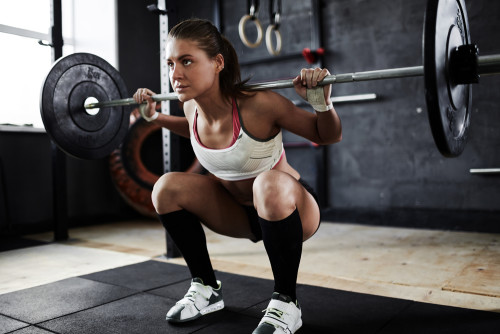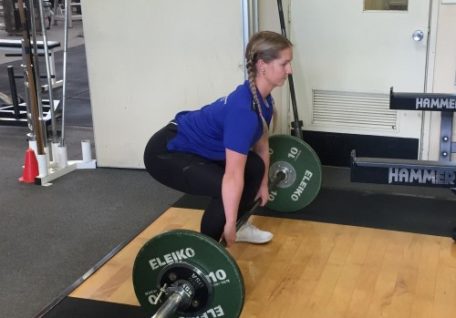One of the more underrated considerations when performing resistance training tasks is appropriate footwear. Wearing the right shoes could add those extra kilograms to your major lifts that you have been searching for to reach that PB! This is especially the case when performing lower body compound lifts such as squats and deadlifts. The following is a comparison of the positives and negatives of wearing different types of footwear for squatting and deadlifting;
Running Shoes/Joggers:
Should be avoided where possible. These types of shoes are designed to deal with the great amount of force which goes through the foot and ankle when running on solid surfaces. As a result they are designed with a soft, cushioned heel to allow for shock absorption. This is the opposite of what you are trying to achieve when squatting and deadlifting, whereby you are trying to maximise ground reaction force. As such a strong and sturdy heel or sole is recommended.
Weightlifting Shoes:
These types of shoes have an elevated heel and a strong and sturdy sole. These are highly recommended for squatting and deadlifting. Poor ankle mobility is one of the biggest limitations when it comes to squatting ability. It can cause a number of technique errors ranging from; knee cave, rounded lower back and lack of depth. The elevated heel in the weightlifting shoe allows for the creation of ‘artificial’ ankle mobility. This is much like the idea of placing weight plates under the heel whilst squatting which is very popular in commercial gyms to allow the lifter to gain more depth in their squat. Weightlifting shoes can be quite expensive and aren’t as necessary for deadlifting where ankle mobility is generally not a limitation. In addition, if ankle mobility isn’t an issue for you then this type of shoe might not be required. If you are unsure whether ankle mobility is a limitation perform a ‘knee to wall’ test for examining ankle mobility and get your answer.
Chuck Taylor Shoes/Hard Soled Shoes:
These types of shoes are similar to weightlifting shoes in that they have a strong and sturdy sole, the difference is that they have a flat heel rather than a raised one. If ankle mobility is not a limitation for you and you are looking for a relatively inexpensive shoe, then this might be your best bet. In addition, these types of shoes might be superior when performing deadlifts. If ankle mobility is a limiting factor, then these shoes will not be appropriate as they will further exasperate that limitation.
Cross-Trainers:
These types of shoes have a slightly raised heel with a solid sole. They are good for quick transitioning between different exercises such as squats, deadlifts and jumps. They are also much more durable then the regular running shoe. If you are someone who enjoys circuit style training such as F45 or CrossFit, then these shoes might give you the support you need whilst also lasting long enough to avoid having to buy a new pair every couple of months.
Barefoot/No Shoes:
This style of training has become very popular in recent times. Obviously this would be a very cost effective way of training. It can be utilised as a form of proprioception whereby the foot gets to feel for the ground which allows for the regain of conscious foot stability with the ground. The disadvantages are that if you train in a commercial gym this might not be allowed and can be unsafe. If ankle mobility is an issue for you then barefoot training might only exasperate that limitation. A good idea might be to perform warm up sets in socks or barefoot just to get the feel of the foot on the ground and then move to shoes.









